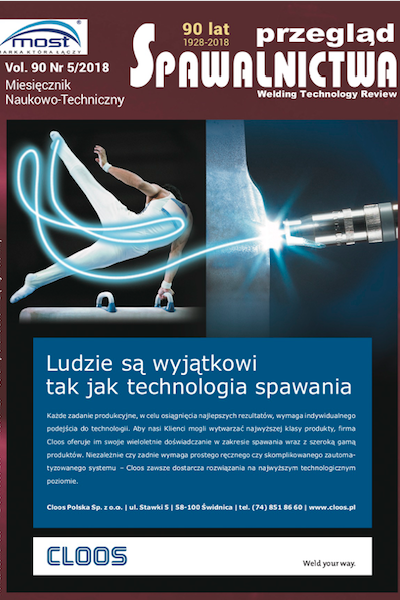Remelting of precision casts from Inconel 713C alloy using welding processes
Main Article Content
Abstract
The precision casting technology is characterized by very good reproduction of complex shapes. However, due to the large wall thickness differences of castings and thus variable stiffness, defects appear in the castings. For most frequent defects in precision castings shrinkage porosities and microcracks should be considered. Welding technologies can be used to repair these defects. The Inconel 713C alloy is considered as a difficult-to- weld or even impossible-to-weld. However, the need to repair precision castings requires attempt to develop technology for their remelting and padding, which would allow the use of these technologies in industrial practice. This paper shows the results of remelting attempts by various methods of welding for disclosed defects in precision castings intended for aviation. It was found that the main reason behind the failure to repair casting defects by welding technologies are hot cracks in the fusion area. These cracks occur as a result of intergranular areas overmelt in the fusion line. Then, during the crystallization of remelting or weld overlay, as a result of appearing deformations, the intergranular liquid film breaks. It was found that the best results of the pad welding allows the use of LMD (Laser Metal Deposition) technology.
Downloads
Article Details
Creative Commons CC BY 4.0 https://creativecommons.org/licenses/by/4.0/
Welding Technology Review (WTR) articles are published open access under a CC BY licence (Creative Commons Attribution 4.0 International licence). The CC BY licence is the most open licence available and considered the industry 'gold standard' for open access; it is also preferred by many funders. This licence allows readers to copy and redistribute the material in any medium or format, and to alter, transform, or build upon the material, including for commercial use, providing the original author is credited.
References
Engineering Properties of Alloy 713C, Nickel Institute, www.nickelinstitute.org
Łyczkowska K., Adamiec J.: Repair of precision casting made of the Inconel 713C alloy, Archives of Foundry Engineering Issue 3, Vol. 17, 2017, pp. 210-216.
Lachowicz M.: Microstructural changes in padding welds made from the 713C alloy after heat treatment, Archives of Foundry Engineering Issue 3, Vol. 10, 2010, pp. 11-16.
Lachowicz M.: Charakterystyka napoin oraz pęknięć powstałych podczas napawania superstopu Inconel 713C, Inżynieria Materiałowa, Vol. 27, nr 3, 2006, s. 474-477.
Łyczkowska K., Adamiec J., Jachym R., Kwieciński K.: Properties of the Inconel 713 Alloy Within the High Temperature Brittleness Range, Archives of Foundry Engineering Issue 4, Vol. 17, 2017, pp. 103-108.
Binczyk F., Śleziona J.: Phase transformations and microstructure of IN-713C nickel superalloy, Archives of Foundry Engineering 25/2, Vol. 9, 2009, pp. 109-112.
Zupaniĉ F., Bonĉina T., Kiržman A., Tichelaar F.D.: Structure of continuously cast Ni-based superalloy Inconel 713C, Journal of Alloys and Compounds 329, 2001, pp. 290-297.
Szczotok A., Kościelniak B.: Characterization of IN713C superalloy microstructure after high temperature creep test by LM, SEM and STEM, Inżynieria Materiałowa, Vol. 2, 2016, pp. 50-58.
Łyczkowska K.: Struktura przetopień odlewów precyzyjnych ze stopu Inconel 713C, XLIV Szkoła Inżynierii Materiałowej, Kraków Rytro 2016.
